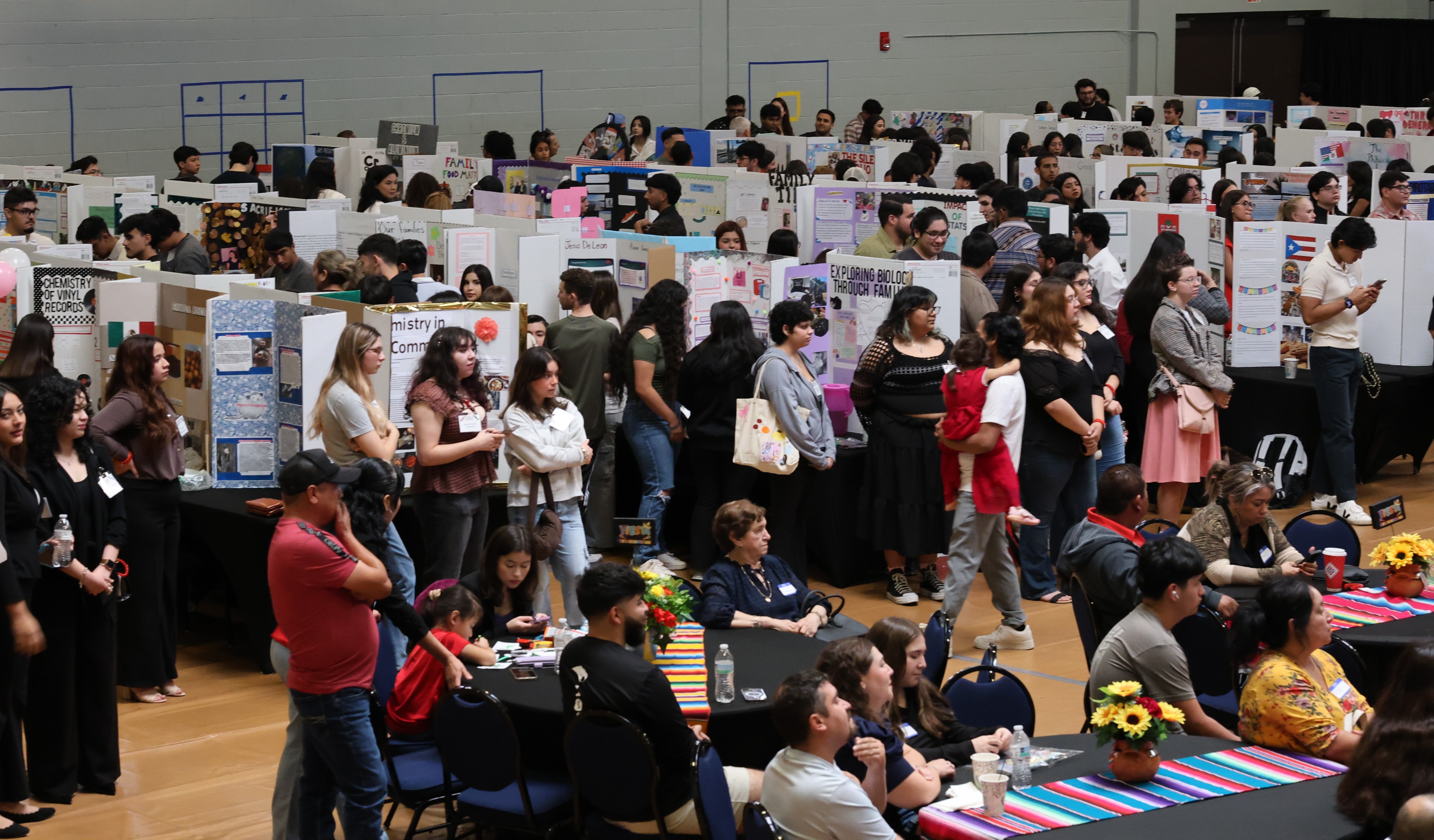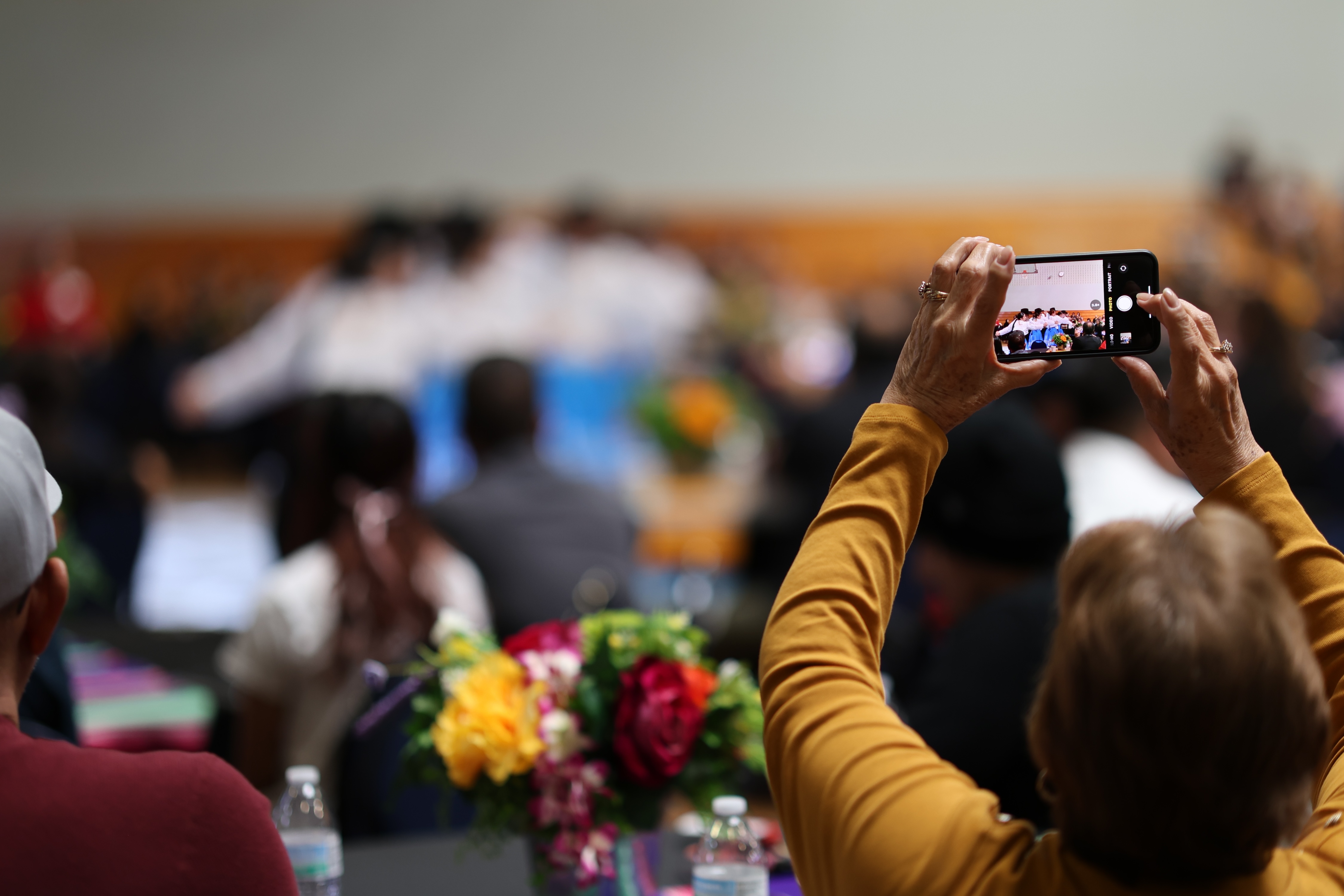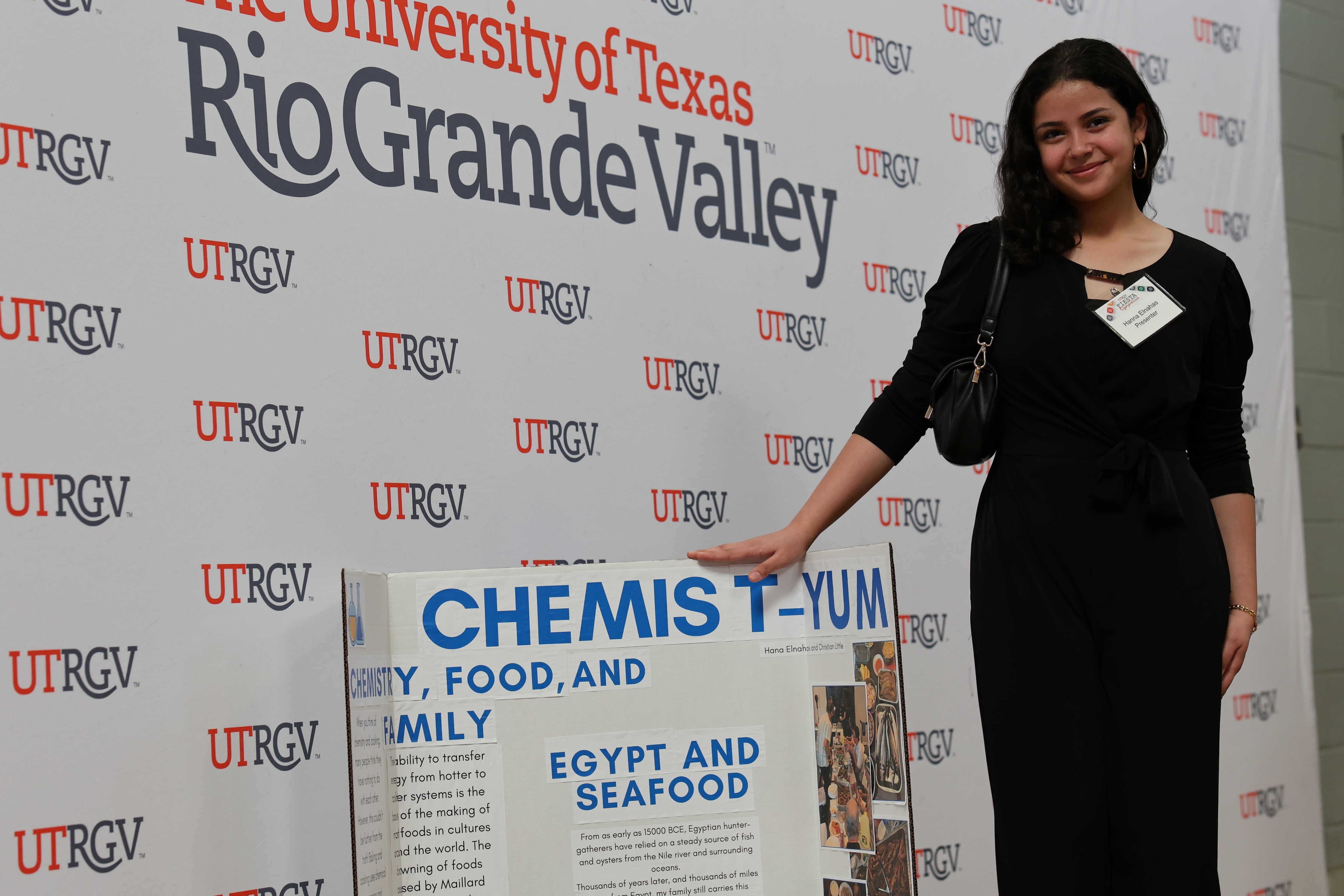By Maria Gonzalez
RIO GRANDE VALLEY, TEXAS – NOV. 27, 2024 – More than 800 attendees gathered at The University of Texas Rio Grande Valley for the Family Integrated Education: Serving & Transforming Academia (FIESTA) Symposium where 426 student presenters showcased the integration of family-centered pedagogy in STEM education.
Hosted on Nov. 16 for a sixth time at the Edinburg Campus, students showed their work through approximately 200 projects to an audience of faculty, staff, family members and community partners.
“The FIESTA Symposium exemplifies how research can drive transformative change in education and community engagement,” said Dr. Can (John) Saygin, senior vice president for Research, dean of the Graduate College and principal investigator of the project.
The FIESTA Symposium is part of the HSI Institutional Transformation Project: Improving Undergraduate STEM Education Through Family-Centered Pedagogy, a National Science Foundation (NSF) initiative.
The project is supported through the NSF’s Improving Undergraduate STEM Education (IUSE): Hispanic-Serving Institutions (HSI Program). UTRGV received nearly $3 million in funding to implement the project, which addresses systemic challenges in STEM education through innovative, family-centered approaches.
Projects, presented across disciplines, highlighted the intersection of STEM concepts with cultural and family traditions. The family-centered pedagogy model encourages students to collaborate with their families, creating meaningful connections between academic and cultural experiences.
“This semester, 24 courses with 962 students implemented the family-centered project, showcasing the broader reach of this innovative approach across the university,” Saygin said. “Through this approach, we are fostering connections between students’ academic pursuits, cultural heritage, and community to create an inclusive environment that supports both student success and institutional growth.
Dr. Juan Salinas, senior personnel on the grant and a longtime advocate for the FIESTA program, emphasized the collaborative nature of the event.
“This event is a collaboration between families, faculty and students,” Salinas said. “The goal is to connect families more closely to their student children’s education and to help students link classroom learning with real-life experiences. It’s a powerful way to help students and their families feel supported and connected.”
AVE Frontera, co-founded by Salinas, serves as a community partner in the FIESTA program, promoting family-centered learning and cultural engagement in line with FIESTA’s mission to foster collaboration between families, community leaders and the university.
One of the student presenters, Hana Elnahas, a mechanical engineering undergraduate, participated in the symposium for a second consecutive year. She highlighted the event’s unique ability to blend science, culture and family.
“I participated in it last year, and I chose to come back again because it’s such a nice blend of family, culture and science,” Elnahas said. “It allows us to grow and expand our horizons in an underserved community. We need to increase everyone’s knowledge about science and everyone’s experience in it, and everything that has to do with culture and science bridging together.”
Elnahas’s poster explored the relationship between chemistry and food, a project inspired by her Egyptian heritage.
“Food is such an important part of every culture,” she said. “I’m from Egypt and a central part of our food demographic is seafood. My family carries this tradition anywhere we go, and that’s why I wanted to bridge this gap between science and the cooking we experience every day in the Valley and the food culture of it.”
The family-centered model is a core component of the NSF-funded project, which focuses on increasing Latinx student participation and success in STEM disciplines. By engaging families as active partners in education, the program builds a sense of community and belonging for students.
“This year, we saw 291 family members and friends attend the symposium,” said Elizabeth Salinas, program coordinator for the project. “FIESTA is about more than just science – it’s about building a sense of connection and belonging for our students and their families. Seeing so many families here remind us how powerful these partnerships can be.”
Through the integration of family-centered approaches, the FIESTA Symposium demonstrates UTRGV’s commitment to fostering inclusive environments that support academic achievement, community engagement and institutional growth.
To learn more about FIESTA, visit https://www.utrgv.edu/fiesta/.
ABOUT UTRGV
The University of Texas Rio Grande Valley (UTRGV) was created by the Texas Legislature in 2013 as the first major public university of the 21st century in Texas. This transformative initiative provided the opportunity to expand educational opportunities in the Rio Grande Valley, including a new School of Medicine and a School of Podiatry, and made it possible for residents of the region to benefit from the Permanent University Fund – a public endowment contributing support to the University of Texas System and other institutions.
UTRGV has campuses and off-campus research and teaching sites throughout the Rio Grande Valley including Brownsville (formerly The University of Texas at Brownsville campus), Edinburg (formerly The University of Texas-Pan American campus), Harlingen, Weslaco, McAllen, Port Isabel, Rio Grande City and South Padre Island. UTRGV, a comprehensive academic institution, enrolled its first class in the fall of 2015; the School of Medicine welcomed its first class in the summer of 2016, and the School of Podiatric Medicine in the fall of 2022.





